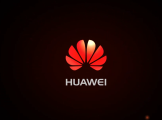|
运行“额外循环”之前的分配

代码:
// loading items to the array, there are no memory warnings after this is completed. The first allocations screenshot is after this code and before extra loop code.
NSMutableArray *albumCovers = [[NSMutableArray alloc] init];
for (MPMediaQuery *query in queries) {
NSArray *allCollections = [query collections];
for (MPMediaItemCollection *collection in allCollections) {
MPMediaItemArtwork *value = [collection.representativeItem valueForProperty:MPMediaItemPropertyArtwork];
UIImage *image = [value imageWithSize:CGSizeMake(100, 100)];
if (image) {
[albumCovers addObject:image];
}
}
}
}
_mediaCollections = [NSArray arrayWithArray:artworkedCollections];
_albumCovers = [NSArray arrayWithArray:albumCovers];
}
还有其他地方:
// !!!!! extra loop - from here the memory starts to grow and never release
for (i=0; i< 800; i++) {
UIImage * coverImage = [_albumCovers objectAtIndex:indexPath.row];
[veryTemp setImage:coverImage]; // exactly this line adds to the memory. with this line commented, there is no problem.
}
运行“额外循环”后的分配

澄清一下,在 only-obj-c 开启和系统库关闭的情况下调用堆栈(如果我打开它们,每个最重方法的最高 % 为 0.9%)

我做了一些研究,发现在 stackoverflow ,这些 VM:ImageIO_PNG_Data 通常来自 [UIImage imageNamed:],但是如您所见,我不使用此方法,我只是获取引用来自 MPMediaItemCollection。
Best Answer-推荐答案
问题是 UIImage 通常只保留一个 ref(CGImageRef),它很小。显示项目后,CGImageRef 被“注入(inject)”了信息。结果,这张 table 一直在增长。
简单但不是最漂亮的解决方案是使用代码:
NSArray = @[obj1, obj2, obj3]; // where obj is custom NSObject and has a UIImage property
代替:
NSArray = @[img1, img2, img3]; // where img is of UIImage type
关于ios - MPMediaItemPropertyArtwork 导致崩溃(奇怪的问题),我们在Stack Overflow上找到一个类似的问题:
https://stackoverflow.com/questions/19182495/
|  客服电话
客服电话
 APP下载
APP下载

 官方微信
官方微信




















